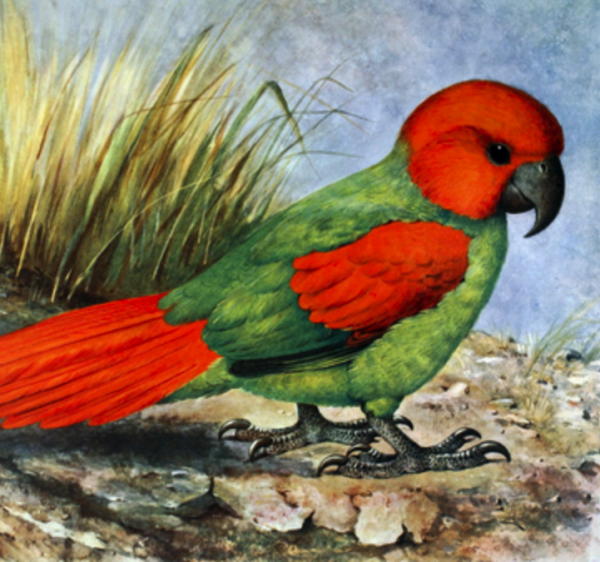
Necropsittacus

rodericanus
Size:
About 50 cm (19.5 in)
Weight:
Not recorded.
Subspecies including nominate:
one
Colour Adult:
Red and green.
Colour Juvenile:
Not recorded.
Call:
Not recorded.
Content Sources:
BirdLife International
Cornell Lab of Ornithology/Birds of the World
Captive Status:
—
Longevity:
—
Housing:
—
Diet:
—
Enrichment:
—
Nest Box Size:
—
Clutch Size:
Not recorded.
Fledging Age:
—
Hatch Weight:
—
Peak Weight:
—
Weaning Weight:
—
World Population:
None.
IUCN Red List Status:
Extinct
CITES Listing:
Not Listed
Threat Summary:
The Rodrigues Parrot became extinct in the 1760s due to hunting.
Range:
Mascarene, Rodrigues Islands.
Habitat:
Wooded forest, terrestrial.
Wild Diet:
Black seed from unknown tree; leaves smell of lemon.
Ecology and Behaviour:
Not recorded.
Clutch and Egg Size:
Not recorded.
Breeding Season:
Not recorded.
Related Links:
—

![© Henrik Gronvold [Public Domain] An illustration depicts an extinct Rodrigues Parrot](https://parrots.org/wp-content/uploads/1990/11/Rodrigues-Parrot-e1732744790984-100x100.png)